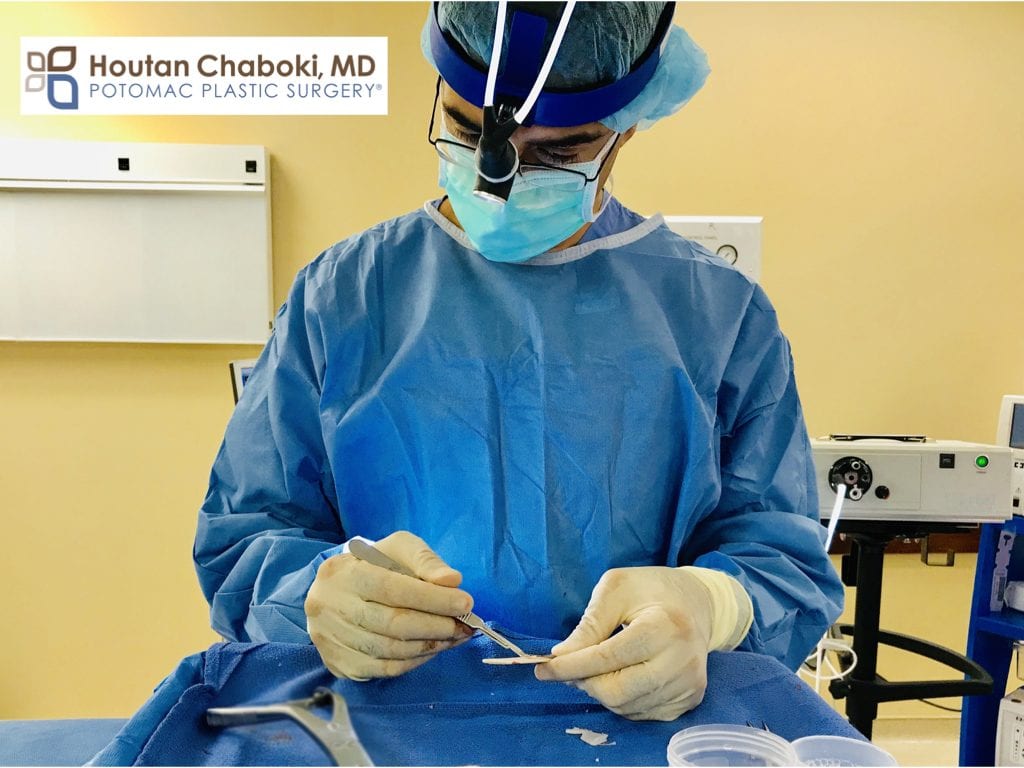
Dr. Chaboki, a specialist in cosmetic surgery, modifies cartilage grafts during a rhinoplasty procedure.
Rhinoplasty is plastic surgery that modifies the appearance of the nose. Bone and/or cartilage can be reshaped for multiple reasons: reducing a bump, straightening the nose, building the bridge, lifting the tip, etc.
Plastic surgeons develop a plan with patients during the rhinoplasty planning process. As part of the surgical plan, grafts may be needed to help achieve the patient’s desired results.
What are Cartilage Grafts?
Grafts are pieces of tissue taken from one are and used in another. Cartilage is usually taken from the nasal septum inside the nose during rhinoplasty. These cartilage grafts may also be obtained from the ear and rib, especially for those who have revision rhinoplasty. For patients who have had multiple revision rhinoplasty procedures, sufficient native cartilage may no longer be present and cadaveric cartilage grafts may be utilized.
Is Cartilage Grafts always used in Rhinoplasty?
No.
Rhinoplasty is surgery that is tailored to each patient. For patient who is only reducing a small hump, then cartilage graft may not be necessary. While another rhinoplasty patient wants lifting of the tip of the nose will more likely need cartilage grafts.
What is done with Cartilage Grafts in Rhinoplasty?
The cartilage can be shaved, crushed, layered, diced, and contoured in a variety of ways. Cartilage grafts may also be placed in various areas of the nose
- upper bridge
- middle bridge
- tip
- nostrils
The names of the grafts will vary among plastic surgeons. However, below are some of the more common terms for specific cartilage grafts in rhinoplasty:
- radix graft
- spreader graft
- midvault graft
- lateral crural strut graft
- tip graft
- columellar strut graft
- alar graft
Read more about cartilage grafts in rhinoplasty in our blog:
- Augmentation Rhinoplasty – Building the Bridge without Breaking the Nose
- Augmenting the Root of the Nose to Improve Profile in Rhinoplasty
- Septoplasty can improve Sinus symptoms, when performed with Rhinoplasty
Contact the office to schedule a consultation with Dr. Chaboki for rhinoplasty surgery. For patients who aren’t ready for surgery, then nonsurgical rhinoplasty with filler injections may be considered.

Leave a Reply